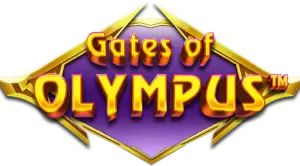Best Casinos Not on GamStop (2025) – Top Non-GamStop Casino Sites for UK Players
Fact-checking
Every non GamStop casino we list is independently reviewed and verified. Our team checks welcome bonuses, slot games, payment methods, and terms directly with each casino not on GamStop.

If you’re searching for a Casino Not on GamStop or a reputable non GamStop casino, you’re in the right place. Our editorial team independently evaluates offshore gambling sites that accept UK players, focusing on licensing, payment reliability, bonus fairness, and withdrawal speed. Below you’ll find safe, data-driven recommendations, plus clear guidance on risks and responsible gambling.
Many players feel “gamstopped” when they’ve registered with GamStop and later realise they want to play again. Whether it’s a temporary decision you now regret, or a system you didn’t fully understand, non GamStop casinos provide a reliable alternative for regaining control over your gambling — without jumping through hoops.
These offshore casinos operate legally under international licenses like Curaçao or Anjouan, allowing UK users to play real-money slots, roulette, poker, and more — even if they’re registered with GamStop. From non GamStop slots with high RTPs to casinos not on GamStop offering crypto payments and no ID verification, the market is full of flexible options tailored to your preferences.
But with this freedom comes responsibility. Not every non GamStop casino is trustworthy, and not every site deserves your deposit. That’s why this guide goes beyond surface-level advice. We’ve thoroughly tested top-rated platforms, reviewed their licensing, security, and slot providers, and compiled everything you need to make informed decisions.
Whether you're new to the idea of playing slots no GamStop or you're simply looking for the best value in 2025, this in-depth guide will walk you through:
- Who it’s for: UK players looking for non-GamStop casinos with transparent terms.
- What you get: Curated rankings, real payment tests, KYC checks, and support evaluations.
- Play responsibly: We include links to helplines and blocking tools; gambling is 18+ and can be addictive.
Let’s dive in and explore the non GamStop casino scene in 2025 — where flexibility, freedom, and fun are just a few clicks away.
The List Of Best Non Gamstop Casinos in The UK 2025
-
2

Goldenbet
100% Sports Bonus + Casino Bonus
non-gamstop
- Fast Registration
- Wide Sportsbook
-
3

Freshbet
100% up to £500 (Sports)
non-gamstop
- Not on GamStop
- Wide Sportsbook
-
5

Mad Casino
777% up to €7,500
non-gamstop
- 120% Welcome Bonus
- 40+ sports & esports
-
6

1Red
200% up to 7760£ + 100
non-gamstop
- Strong sportsbook
- Big welcome bonuses
-
7

Pitbet
225% up to 11000€
non-gamstop
- No GamStop restrictions
- Generous Bonuses
-
8

LuckyWands Casino
200% up to £1500
non-gamstop
- Multiple welcome bonuses
- Weekly reloads for sports
-
9

Seven Casino
7500€ + 10% Cashback on Joining
non-gamstop
- Not Registered on GamStop
- Available to users from the UK
-
10

Cosmobet
150% up to 500€/$/£
non-gamstop
- Multiple welcome bonuses
- Weekly reloads for sports
Looking for the top-rated non-GamStop casinos in 2025? We’ve handpicked ten platforms that consistently deliver across all categories — from welcome bonuses and fast withdrawals to game variety and user experience. While many offshore and European casinos that aren’t on GamStop compete for attention, these ten operators truly stand out for UK players seeking reliable non-GamStop alternatives.
Whether you’re after slots, live casino tables, or a powerful sportsbook, these sites tick all the boxes for performance, reputation, and value. Below is our expert-curated list of the 10 best non-GamStop casinos right now:
Top Casino Sites Not on Gamstop – Best For UK Players 2025
These are the non-GamStop casinos I currently recommend for UK players. Each brand earned high marks in my hands-on tests for payments (speed, limits, and KYC clarity), game breadth and quality, and responsive support. I re-audit these Casino Not on Gamstop sites every month and log any changes to terms, bonuses, or payout performance—if a casino slips on standards, it doesn’t stay on this list.
| Casino | Welcome Bonus | Promo Highlights |
|---|---|---|
| MyStake Casino | 150% up to €200 | Free spin drops, sports free bets, regular reloads |
| GoldenBet Casino | 100% up to €500 | Slot races, wager-free spins promos, odds boosts |
| FreshBet Casino | 100% up to £500 (Sports) | Fast e-wallet cashback, rotating reloads, tournaments |
| Donbet Casino | 100% up to €1,000 + 50 Free Spins | Weekly cashback, parlay boosts, VIP rewards |
| Mad Casino | 777% up to €7,500 | High-volatility slot promos, reloads, crypto perks |
| 1Red Casino | 200% up to 7760£ + 100 | Crypto cashback, straightforward terms, reload deals |
| PitBet Casino | 225% up to 11000€ | Weekend cashback, quick reloads, mobile bet promos |
| LuckyWands Casino | 200% up to £1500 | Tournament schedule, pragmatic promos, loyalty boosts |
| Seven Casino | 7500€ + 10% Cashback on Joining | Live-casino cashback, seasonal offers, fast withdrawals |
| CosmoBet Casino | 150% up to 500€/$/£ | Fast-withdrawal promos, crypto deals, simple cashback |
MyStake Casino
MyStake is a mature non GamStop casino that blends a deep slots catalogue with a full sportsbook and live-dealer lobby. As a casino not on GamStop, it stands out for clean UX, broad payment coverage (cards, e-wallets, popular crypto), and steady withdrawal performance once KYC is complete. Table fans get multiple blackjack/roulette variants, while sports bettors will find competitive markets on football, tennis, and UFC. We like the transparent T&Cs and responsive live chat—both important when you’re playing outside the UKGC framework. Keep an eye on wagering rules and game weighting before you accept any offer; MyStake tends to be clear about these, which is a plus for long-term value.

Best for: players who want one wallet for slots + sportsbook at a non-UKGC site
Pros
- Broad payments
- Strong game mix
- Live chat that actually helps
Cons
- KYC can trigger at withdrawal
- Country-specific payment limits
Key facts: Offshore licence; cards/e-wallets/crypto; typical payouts after verification
GoldenBet Casino
GoldenBet positions itself as a non-GamStop casino with a genuine sportsbook backbone. Odds are competitive on major leagues, and the live betting interface is intuitive on mobile. The casino side leans on reputable studios, delivering high-RTP slots and stable live-dealer tables. As a casino not on GamStop, it offers flexible deposit options (Visa/Mastercard, e-wallets, crypto), but do review currency handling and potential fees. Support response times are decent via chat; email follow-ups can be slower. Overall, GoldenBet suits bettors who split time between markets and reels and want a straightforward cash-out path once KYC is cleared.

Best for: mixed bettors who value both sports and live casino
Pros
- Competitive odds
- Clean in-play module
- Reputable game providers
Cons
- Geo-dependent methods
- Occasional peak-time support delays
Key facts: Offshore licence; multiple fiat/crypto rails; verify early to speed payouts
1Red Casino – A Crypto-Ready Haven Outside GamStop
FreshBet is a modern non GamStop casino known for its slick interface and fast e-wallet withdrawals after verification. The slot grid is wide (classic, Megaways, feature buys) and the live-dealer lobby covers blackjack, roulette, baccarat, and game shows. As a casino not on GamStop, FreshBet offers flexible payments, including crypto, which can shorten settlement times. The bonus catalogue rotates often—always check wagering, max win caps, and excluded games. We’ve found support to be helpful with payment trace requests, which matters when you’re playing offshore.

Best for: e-wallet users who prioritize quick post-KYC payouts
Pros
- Fast UI
- Strong slot variety
- Crypto support
Cons
- Rotating promos can be complex
- T&C details matter
Key facts: Offshore licence; cards/e-wallets/crypto; typical KYC before first cash-out
Freshbet Casino
Freshbet Casino delivers exactly what its name suggests — a modern, streamlined gambling experience tailored for UK players outside the GamStop network. With a focus on crypto compatibility, fast gameplay, and an intuitive design, Freshbet is the go-to choice for players who want smooth performance and no unnecessary restrictions.

Best for: e-wallet users who prioritize quick post-KYC payouts
Pros
- Fast UI
- Strong slot variety
- Crypto support
Cons
- Rotating promos can be complex
- T&C details matter
Key facts: Offshore licence; cards/e-wallets/crypto; typical KYC before first cash-out
Donbet Casino
Donbet leads with sport, then backs it up with a capable casino. If you want a casino not on GamStop that treats betting seriously, Donbet’s market breadth and live-bet tools are the draw. The casino hub includes mainstream studios, a decent jackpot rotation, and enough live tables to avoid queues. Payments cover major rails; crypto is usually available for both deposit and withdrawal. As a non GamStop casino, Donbet is outside UKGC scope, so read terms closely—especially combo-bet requirements and any payout documentation rules.

Best for: football and tennis bettors who also spin slots on the side
Pros
- Wide markets
- Solid live-betting UX
- Tidy casino add-on
Cons
- Parlay rules can be strict
- Identity checks can slow first payout
Key facts: Offshore licence; multi-rail payments; clear limits published in cashier
Mad Casino – A Bold Non-GamStop Casino with Massive Bonuses
Mad Casino feels purpose-built for players who love live-dealer sessions and high-volatility slots. As a non-GamStop casino, it pushes variety: lightning roulette, multi-seat blackjack, and plenty of feature-rich slots. Payment coverage is broad; crypto availability is a plus for speed. Support is responsive during EU hours; overnight queues can build. Read bonus T&Cs carefully—some live games may contribute at reduced rates to wagering. If you want an offshore casino not on GamStop with a “live-first” feel, this fits.

Best for: live-dealer regulars and slot grinders
Pros
- Deep live lobby
- High-volatility titles
- Crypto pathways
Cons
- Live games often low-weight for wagering
- Time-zone support gaps
Key facts: Offshore licence; cards/e-wallets/crypto; KYC before larger withdrawals
1Red — Crypto-friendly with simple promos
1Red is a non GamStop casino that keeps promos relatively simple and leans into crypto payments. That makes it a match for players who want quicker settlements and lower banking friction. The slot library spans mainstream and niche providers; the live-dealer floor is dependable, if not the largest on this list. As a casino not on GamStop, 1Red isn’t covered by UKGC rules, so you shoulder more responsibility: check currency conversions, network fees, and any maximum cash-out clauses before you start.

Best for: crypto users who value clean terms over flashy promos
Pros
- Crypto on-ramps/offs
- Straightforward offers
- Stable gameplay
Cons
- Smaller live lobby than some rivals
- Fiat fees vary by region
Key facts: Offshore licence; BTC/ETH/USDT plus fiat; verify to increase limits
Pitbet Casino – Cashback-Focused Casino Outside GamStop
Pitbet keeps things simple: fast market posting, no-nonsense bet slip, and a casino hub that covers the essentials. As a casino not on GamStop, it offers convenience—card and wallet deposits are typically quick, and live odds refresh reliably on mobile. The casino side won’t overwhelm veterans but is more than enough for casual spins and evening roulette. If you want a non GamStop casino that feels “sportsbook-first” with minimal friction, Pitbet is a practical pick.

Best for: mobile sports bettors who want a light casino add-on
Pros
- Fast odds
- Tidy UI
- Low-friction payments
Cons
- Fewer niche slots
- Promos rotate quickly
Key facts: Offshore licence; cards/e-wallets/crypto; standard KYC on withdrawals
LuckyWands — Casual-friendly with frequent events
LuckyWands suits casual players who want steady tournaments, pragmatic promos, and a clean slots layout. It’s a non-GamStop casino with a good balance of mainstream providers and live-dealer staples. Payments include cards, wallets, and common crypto rails; withdrawals are smooth once verification is complete. As a casino not on GamStop, it’s outside UKGC oversight—so lean on its published limits and T&Cs, and use deposit limits to keep sessions healthy.

Best for: casual slot players who enjoy tournaments and live-dealer breaks
Pros
- Regular events
- Approachable UI
- Multiple payment options
Cons
- Some promos have tight game eligibility
- Event schedules vary
Key facts: Offshore licence; multi-rail payments; verification increases limits
Cosmobet Casino
Cosmobet is a clean, easy-to-use non GamStop casino that bundles a broad casino lobby with a full sportsbook. As a casino not on GamStop, it focuses on the essentials: solid slots and live-dealer coverage, intuitive navigation, and payments most UK players recognise. Deposits are straightforward via cards, e-wallets, and popular cryptocurrencies. Withdrawals are reasonable once verification is completed; smaller cash-outs may be quicker depending on method and account status. Sports fans get markets across football, tennis and MMA with responsive in-play odds.

Best for: players who want a no-frills hub for both sportsbook and casino outside the UKGC
Pros
- Clean UX
- Broad game mix
- Card/e-wallet/crypto options
Cons
- Loyalty/VIP info is light
- Fewer niche mini-games than trend-led rivals
Key facts: Offshore licence; slots, jackpots, live casino + integrated sportsbook; verify early to speed payouts
Seven Casino
Seven Casino delivers a polished casino not on GamStop experience with 2,000+ games, a robust live-dealer floor, and a competitive sportsbook. Navigation is slick on desktop and mobile, and the cashier supports cards, major e-wallets, and crypto rails for quicker settlements. Bonuses are balanced rather than flashy, with recurring reloads and occasional spins that suit regulars. For a non GamStop casino that covers both reels and weekend football, Seven is an easy recommendation.

Best for: UK players who split time between slots/live tables and regular sports bets
Pros
- Mobile-friendly UI
- Wide library (slots + live)
- Fast e-wallet/crypto withdrawals
Cons
- No native iOS/Android app
- VIP/loyalty details are limited
Key facts: Offshore licence; esports + mainstream markets; typical KYC before higher-value withdrawals
What Is GamStop?
GamStop is the UK’s national self-exclusion scheme, designed to help people control their online gambling habits by blocking access to all UK-licensed gambling websites. Launched by the National Online Self-Exclusion Scheme (NOSES) and regulated by the UK Gambling Commission (UKGC), GamStop has become a central pillar of responsible gambling in the United Kingdom.

Once you sign up, you're restricted from accessing any casino or betting site licensed in the UK — including top-name brands and even lottery platforms. It doesn’t matter whether you're trying to play slots, bet on football, or claim a free spins offer — if the site holds a UKGC license, your access is denied.
What Are Non GamStop Casinos?
Non GamStop casinos are online gambling platforms that operate outside the UK’s national self-exclusion system, GamStop. Unlike UKGC-licensed casinos that are required by law to enforce GamStop restrictions, these sites are offshore operators — meaning they’re licensed in jurisdictions like Curaçao, Anjouan, or in some cases, the Malta Gaming Authority (MGA).
Because these casinos are not regulated by the UK Gambling Commission, they are under no obligation to participate in GamStop or share player data with the UK’s exclusion registry. As a result, even if you’ve registered with GamStop, you can still sign up and play at these platforms — no blocks, no restrictions.
How Do They Work?
These non GamStop casino sites function much like any other online casino. You register, make a deposit, and start playing real-money games — from online slots and live roulette to sports betting and even crypto-based games. The key difference lies in the licensing and self-exclusion policies.
Instead of following UKGC rules, non GamStop casinos follow the standards set by international gaming authorities. Many of these platforms are still quite reputable, offering secure payment options, verified software providers, and in-house responsible gambling tools. Some even offer their own self-exclusion programs, giving players control without the permanent rigidity of GamStop.
How to Block Non GamStop Casinos Without Using GamStop
GamStop isn’t the only way to control your online gambling — and for many UK players, it’s not the most flexible either. If you're playing at non GamStop casinos but want to take a break, several independent tools let you block gambling sites across all devices — without committing to GamStop’s long-term exclusions.
Here are the top alternatives:
BetBlocker
A free tool that blocks access to gambling sites, including non GamStop casinos. Works on all devices (Windows, Mac, iOS, Android), with exclusion periods from 24 hours to 5 years. Flexible and effective.
Net Nanny
Originally a parental control app, Net Nanny lets you set custom filters to block gambling websites. Ideal for short breaks or scheduled time-outs across your desktop and mobile.
GamBan
A paid service that locks down all gambling content — including offshore casinos — once activated. No going back during the exclusion period. Best for those ready to fully quit.
Which Self-Exclusion Method Should You Choose?
If you’re exploring casinos not on GamStop but want to maintain personal control, here’s a quick breakdown:
|
Tool |
Free? |
Works on Non GamStop Casinos? |
Flexibility |
Platforms Supported |
|
Net Nanny |
❌ |
✅ |
High |
Windows, Mac, Android |
|
BetBlocker |
✅ |
✅ |
Very High |
All major devices |
|
GamBan |
❌ |
✅ |
Low |
All major devices |
Ultimately, self-exclusion without GamStop is possible — and often more adaptable — using tools like BetBlocker or Net Nanny. These services give you full control over your gambling habits, even if you're playing on non GamStop casinos.
UK Casinos Not on GamStop vs. UKGC-Licensed Casinos – Key Differences Explained
When it comes to online gambling in the UK, there are two very different categories of platforms: UKGC-licensed casinos (regulated by the UK Gambling Commission) and casinos not on GamStop, which operate offshore. While both offer access to real-money games, they differ greatly in how they handle registration, player protection, features, and freedom.
Below, we break down the real differences between these two types of casinos — so you can make an informed choice based on what matters most to you.
Registration Process & Player Privacy
|
Feature |
UKGC Casinos |
Non GamStop Casinos |
|
KYC Checks |
Always required (ID, address, source of funds) |
Often minimal or optional |
|
Credit Checks |
Sometimes enforced |
Rare or never |
|
Time to Register |
Can take 24–48 hours |
Usually under 2 minutes |
|
Privacy Level |
Intrusive (documents, affordability checks) |
Higher privacy, less personal info needed |
UKGC casinos are required by law to conduct strict KYC (Know Your Customer) verification. That often means uploading ID, bank statements, and in some cases, proving your income to continue playing — especially for frequent deposits.
In contrast, non GamStop casinos typically streamline the process. Most offshore operators ask only for basic details (name, email, currency) and allow instant access to games. Some platforms even support no ID casinos, especially when using crypto.
Features, Game Options & Freedom to Play
UKGC-regulated platforms are tightly controlled in terms of what features are allowed — particularly when it comes to slots and payment methods.
|
Feature |
UKGC Casinos |
Non GamStop Casinos |
|
Credit Card Deposits |
Banned since 2020 |
Accepted on many sites |
|
Autoplay / Quickspin |
Disabled by law |
Fully functional |
|
Max Bet & Wagering Caps |
Enforced on bonuses |
No fixed limits on most offshore sites |
|
Crypto Payments |
Not accepted |
Widely supported |
These non GamStop slot sites offer a more traditional, high-energy casino experience — similar to what UK players enjoyed before tighter restrictions were introduced by the UKGC. You can spin with autoplay, deposit with credit cards, and even claim bigger bonuses without intrusive affordability checks.
Summary: Which One Is Right for You?
|
Criteria |
Best Choice |
|
Privacy & Fast Registration |
Non GamStop Casinos |
|
Strict Regulation & Oversight |
UKGC Casinos |
|
Payment Flexibility |
Non GamStop Casinos |
|
Responsible Gambling Support |
UKGC Casinos |
|
Bigger Bonuses & Fewer Limits |
Non GamStop Casinos |
|
Legal for UK Players |
Both (offshore sites must be licensed) |
Non GamStop casinos are ideal for UK players who value freedom, bigger bonuses, crypto payments, and fast registration without unnecessary delays. Meanwhile, UKGC casinos are best suited for those who prioritise regulation, accountability, and structured support.
At the end of the day, it’s about choosing a platform that matches your needs, your play style, and your level of responsibility.
Pros of Non GamStop Casinos
1. Access for GamStopped Players
The biggest appeal is simple: you can play even if you’re self-excluded via GamStop. These casinos aren’t linked to the UKGC database, meaning registration is always open.
2. Fast Registration With No ID
Many non GamStop casinos allow you to sign up with just an email and password — no document uploads, no source-of-funds checks. Some platforms even support no ID withdrawals, especially for crypto users.
3. Crypto & Credit Card Payments
Unlike UKGC casinos that ban credit card deposits, non GamStop sites often support both crypto wallets (Bitcoin, Tether, Ethereum) and credit/debit cards, giving players full financial flexibility.
4. Larger Bonuses and Fewer Restrictions
Expect generous welcome packages, regular reloads, and free spin offers without strict wagering caps or deposit limits. These casinos are known for high roller promotions and cashback deals.
5. Autoplay & High-Speed Gameplay
UK regulations have removed autospin and turbo features from slot games — but not on offshore platforms. Here, you can enjoy faster slot spins and uninterrupted betting sessions.
6. Less Intrusive Oversight
No affordability checks. No pop-up warnings after 20 minutes. Casinos not on GamStop allow players to gamble without feeling micromanaged.
Cons of Non GamStop Casinos
1. No GamStop Integration
If you’re trying to avoid gambling, these sites won’t block you automatically. Without GamStop protections, it’s easy to fall back into gambling habits unless you use third-party tools (like BetBlocker or GamBan).
2. Variable Licensing Standards
Most non GamStop sites are licensed in Curaçao or other jurisdictions that don’t match the UKGC’s strict oversight. While many are legit, some can be shady — so choosing reputable sites is critical.
3. Limited Responsible Gambling Tools
Unlike UKGC platforms, non GamStop casinos may not offer deposit limits, self-exclusion options, or reality checks by default. The burden of control falls entirely on the player.
4. No Access to UK Dispute Services
If you have a complaint or withdrawal issue, you can’t contact the UKGC or ADR services. You must rely on the casino’s support team — or hope the license authority intervenes (which isn't guaranteed).
5. Not Covered by UK Financial Protections
Since these platforms are offshore, you’re not protected by UK consumer laws or financial watchdogs. Refunds and disputes may be harder to resolve.
How to Find Trusted Non GamStop Casinos
With hundreds of offshore casinos targeting UK players, finding a trusted non GamStop casino can be tricky. While some platforms offer a safe, high-quality experience, others are poorly managed, unreliable, or outright scams. That’s why it's critical to know what to look for before you sign up.
Below is a checklist of the most important factors that help you separate the legitimate casinos not on GamStop from the ones to avoid.
1. Check the Licensing Authority
Legit non GamStop casinos should hold an active gaming license from a recognised offshore authority. The most common regulators include:
- Curaçao eGaming (most popular)
- Anjouan Gambling Board
- Panama Gaming Commission
- Kahnawake Gaming Commission
- Malta Gaming Authority (rare for non GamStop but reputable)
Make sure the casino displays a valid license number and includes a working link to the regulator’s website. If the licensing info is missing or vague, treat it as a red flag.
2. Look for Verified Payment Methods
A trustworthy non GamStop site will offer secure and reputable deposit options like:
- Cryptocurrency: Bitcoin, Ethereum, Tether (USDT)
- Bank Cards: Visa, Mastercard, AmEx (not banned like on UKGC sites)
- E-wallets: Jeton, MiFinity, or even PayPal alternatives
- Fast withdrawals: under 12 hours is ideal for crypto
Avoid platforms that only offer unusual or untraceable payment methods, or demand up-front ID uploads before deposit — that’s a tactic used by scam operators.
3. Review Game Providers
High-quality game developers only partner with licensed, compliant casinos. Look for familiar names such as:
- Pragmatic Play
- BGaming
- Betsoft
- Evolution Gaming
- NoLimit City
- Playson
If a casino offers random or unknown games with no developer logos, the software may be unverified — and possibly rigged.
4. Read Real Player Reviews
Check independent forums like Trustpilot, Reddit, or AskGamblers to see what real users are saying about the casino. Look out for:
- Delayed or denied withdrawals
- Unresponsive support
- Bonus traps with impossible wagering
- Fake licensing claims
If a casino is listed on multiple blacklists, avoid it entirely — no matter how good the promo looks.
5. Test the Customer Support
Reach out to their live chat or support email with a few basic questions before signing up. Trusted non GamStop casinos will:
- Respond quickly (under 5 minutes for chat)
- Answer clearly without copy-paste responses
- Offer 24/7 assistance in English
If support is slow, rude, or absent — that’s a sign the casino likely won’t help when it matters.
6. Review Bonus Terms Carefully
Bigger doesn’t always mean better. Make sure the bonus:
- Has reasonable wagering (30x–40x is fair)
- Doesn’t limit withdrawals unfairly
- Doesn’t require impossible bets (e.g. 100x turnover)
- Isn’t voided if you win too much
Transparent non GamStop casinos clearly state all bonus conditions, including eligible games and max cashout.
Banking Options at Non GamStop Casinos – Faster, More Flexible Payments
One of the biggest reasons UK players choose casinos not on GamStop is the superior range of banking options. Unlike UKGC-regulated casinos, which have strict limitations on payment methods (including a complete ban on credit cards), non GamStop casinos offer fast, flexible, and privacy-friendly deposits and withdrawals.
Below, we’ll walk you through the most popular banking methods at non GamStop casino sites, and explain why they’re a better fit for many players in 2025.
1. Credit Card Payments (Visa, Mastercard, AmEx)
UKGC rules banned credit card gambling in 2020 — but offshore casinos not on GamStop still allow it.
- Use Visa, Mastercard, or even American Express
- No third-party wallet setup required
- Supports quick deposits with high limits
- Works for UK players at most non-UK casinos
This is a game-changer for many UK players who relied on credit cards for convenience but were blocked by UK restrictions.
2. Cryptocurrency (Bitcoin, Ethereum, USDT)
Crypto casinos not on GamStop are booming, and for good reason:
- Instant deposits and ultra-fast withdrawals
- High levels of privacy — no bank involved
- Accepted coins: Bitcoin (BTC), Ethereum (ETH), Tether (USDT), Litecoin (LTC)
- Often zero fees and 1–2 hour cashout times
This is ideal for players who value both anonymity and speed, especially if they’re using no ID casinos.
3. E-Wallets (Jeton, MiFinity, Perfect Money)
While PayPal isn’t typically accepted at non GamStop casinos, several international e-wallets are:
- Jeton Wallet – Popular in Europe, fast and easy to use
- MiFinity – Great for mobile and low fees
- Perfect Money – A go-to for high-stakes players
- AstroPay – Prepaid and reloadable virtual card
These wallets often allow instant transactions and fewer identity checks compared to UKGC platforms.
4. Bank Transfers & Instant Banking
Non GamStop sites usually offer a wide range of local and international bank transfer methods:
- SEPA & SWIFT transfers
- Instant banking through providers like Volt or Klarna
- Minimal fees, though sometimes slower than crypto
While slower than cards or crypto, bank transfers are still reliable for larger withdrawals.
Faster Withdrawals – No Delays, No Excuses
One of the biggest pain points at UKGC casinos is slow withdrawals — often due to repeated ID checks and manual reviews.
At non GamStop casinos, you’ll find:
- Crypto cashouts processed in 1–2 hours
- Card and wallet withdrawals within 24 hours
- No affordability checks slowing things down
- Auto-approval at many sites after your first win
Some platforms even market themselves as fast withdrawal casinos, specifically targeting UK players tired of waiting.
Customer Support at Non GamStop Casinos – Is It Reliable?
Customer service at non GamStop casinos has improved significantly in recent years. While these sites don’t follow UKGC regulations, many still offer 24/7 support, fast response times, and professional service — especially at the top-tier platforms we recommend.
What You Can Expect
Most trusted casinos not on GamStop provide:
- Live Chat: Available 24/7 on most platforms
- Email Support: For verification, documents, or detailed issues
- Multilingual Agents: English is standard, with support in other major languages
- Self-Help Sections: FAQs for registration, bonuses, and payments
Some even offer Telegram or WhatsApp support, particularly crypto-friendly casinos aiming for fast, mobile-first service.
Online Slots Not on GamStop – Bigger Libraries, Fewer Limits
When it comes to online slots not on GamStop, UK players are in for a treat. Offshore slot sites offer a far more flexible and diverse experience than UKGC-licensed platforms. Thanks to the absence of UK Gambling Commission restrictions, players can enjoy:
- A wider variety of slot titles
- Higher maximum bets
- Autoplay and turbo spin functionality
- Instant bonus buys
While UK casinos often disable features like autoplay and cap wager sizes, non GamStop casinos allow players to experience slots as they were meant to be played.
You’ll still find titles from world-class providers like Pragmatic Play, Hacksaw Gaming, ELK Studios, NoLimit City, and BGaming — along with network jackpots such as Mega Moolah and Drops & Wins. Whether you love Cluster Pays, Megaways, or high-RTP classic reels, you’ll find them in abundance at offshore casinos.
Table Games & Live Casino Games Not on GamStop
Most non GamStop casino sites are hybrid platforms — offering more than just slots. Their live dealer and table game sections are loaded with:
- Blackjack (standard, multi-hand, VIP)
- Roulette (European, American, Auto)
- Baccarat (classic, speed, commission-free)
- Game-show-style titles like Crazy Time, Monopoly Live, and Deal or No Deal
Powered by top-tier studios like Evolution Gaming and Ezugi, these live games are streamed in real-time with professional dealers — and often with higher table limits than UK sites.
Crash Games at Non GamStop Casinos
Crash games are one of the fastest-growing verticals in non-GamStop gambling. These simple yet addictive games allow players to:
- Place a bet
- Watch the multiplier rise
- Cash out before the game “crashes”
Popular crash games include Aviator, Spaceman, and Crash Duel — all of which are available at most modern non GamStop platforms. With fast rounds, flexible bets, and huge risk/reward appeal, crash games are ideal for mobile players and crypto bettors.
Poker Games Not on GamStop
Non GamStop poker sites cater to serious players with a competitive edge. They support a full suite of poker formats, including:
- Texas Hold’em
- Omaha & Omaha Hi-Lo
- 5-Card Draw & Caribbean Stud
- Sit & Go tournaments
- MTTs with large prize pools
Unlike UKGC poker rooms, these offshore sites don’t restrict tournament structures or betting ranges. You’ll also find video poker titles like Jacks or Better, Deuces Wild, and All Aces with flexible coin values — perfect for high rollers or casual grinders alike.
Unique Games at Non GamStop Casinos
Offshore casinos offer a playground of alternative casino games that aren’t always available in the UK. Some of the standouts include:
- Plinko – A pegboard-based multiplier game with physics-based randomness
- Slingo – A slot-bingo hybrid that combines luck and strategy
- Live Game Shows – Real-money interactive experiences streamed from live studios
- Instant Win & Scratch Games – Quick, low-stake chances to win
These types of games give non GamStop casinos an edge when it comes to variety and entertainment.
Sports Betting Without GamStop – Bigger Bets, Global Markets
Non GamStop bookmakers are especially popular with UK punters who want higher stakes and fewer limitations. These platforms typically offer:
- Higher betting limits than UK sites
- Broader sports coverage — including niche sports, esports, and global leagues
- Fast payouts and crypto-friendly betting
- Frequent odds boosts, cashback, and reload bonuses
Because they're not bound by the same compliance rules as UK sportsbooks, non GamStop betting sites can offer unique markets — from political bets and virtual sports to MMA, kabaddi, and live-streamed cricket.
Many hybrid gambling platforms combine casinos and sportsbooks into one — meaning players can seamlessly switch between slots, blackjack, and Premier League betting.
Just note: most platforms allow you to claim only one welcome bonus — either for the casino or the sportsbook — not both.
Bonuses & Promotions at the Best Casinos Not on GamStop (2025)
One of the biggest advantages of playing at casinos not on GamStop is the sheer generosity and variety of promotions they offer. Unlike UKGC-regulated casinos — which are limited by strict advertising and bonus rules — non GamStop casino sites operate under more flexible licensing conditions. That means bigger bonuses, fewer restrictions, and more frequent rewards for UK players.
Whether you’re chasing a huge welcome package, free spins on new slot releases, or VIP cashback perks, the best non GamStop casinos UK have something to offer players of all bankrolls and play styles.
Below is a breakdown of the most popular bonus types available in 2025, along with expert insights to help you use them wisely.
Welcome Bonuses – Bigger, Bolder, and Often with Free Spins
Almost all non GamStop casinos greet new players with a matched deposit bonus. These offers typically match your first deposit by 100% to 300%, sometimes stretching across your first three deposits.
Example: Deposit £200 and receive another £200 in bonus funds — or more.
Many sites also sweeten the deal with free spins on popular slots like Sweet Bonanza, Gates of Olympus, or Book of Dead. Unlike UK casinos, offshore sites often impose fewer wagering limits, letting you extract more value from your first play session.
Why It’s Better: Higher match percentages, fewer bonus restrictions, and larger cash caps.
Reload Bonuses – Ongoing Rewards for Regular Players
Reload bonuses are not just for new users. At non GamStop casinos, you’ll find:
- Daily reloads (e.g., 50% up to £100)
- Weekend top-up bonuses
- Weekly slot promotions with free spins
These incentives keep existing players engaged without requiring large deposits. They're perfect for casual UK players looking for consistent perks.
Cashback Offers – Minimise Risk, Maximise Playtime
Many non GamStop slot sites offer cashback promotions to soften your losses and reward continued play. Here's how they usually work:
- A percentage (typically 10% to 25%) of your net losses is returned to your account
- Cashback is credited as real money or low-wager bonus funds
- Usually calculated daily or weekly
Example: Lose £200 in a week → get £40 back with 20% cashback.
Why It’s Better: Most UKGC casinos offer capped or restricted cashback — offshore sites provide more generous, often wager-free returns.
Free Spins – Try Slots Without Risk
Free spins are everywhere at non GamStop casinos. You’ll find them attached to welcome offers, reload deals, or as standalone promotions during slot tournaments.
Key features:
- Typically awarded on featured games (e.g., Sugar Rush, Big Bass Bonanza)
- Winnings usually come with wagering requirements (10x–30x is common)
- Some high-end sites offer no-wager spins — withdraw what you win
Pro Tip: Look for “free spins every day” promos. These give you 10–20 spins for logging in or depositing daily.
Loyalty Programmes – Get Rewarded for Consistency
The best non GamStop casino sites have tiered loyalty programmes that reward you for long-term play. Benefits increase as you climb levels, including:
- Weekly cashback boosts
- Exclusive tournaments
- Birthday gifts or free bets
- Dedicated account managers
Progress is usually based on wagering activity or number of deposits, with rewards tailored to your play style.
VIP Clubs – Priority Perks for High Rollers
VIP schemes go even further, offering elite treatment to the casino’s most active and loyal players.
Expect:
- Faster withdrawals
- Higher deposit and bet limits
- Custom bonuses & free spins packages
- Personal VIP host and exclusive events
Some non GamStop VIP casinos even reduce wagering requirements or offer wager-free cashback for top-tier members.
Referral Bonuses – Bring a Friend, Get Rewarded
While rare in the UK, non GamStop casinos often run robust referral schemes. These range from simple refer-a-friend bonuses to multi-tiered affiliate-style earnings.
You could receive:
- Free spins for each verified signup
- Bonus cash based on your friend’s deposits or wagers
- Rank upgrades in loyalty or VIP programmes
Pro Tip: Always check referral T&Cs — some platforms pay recurring commission-like bonuses over time.
Terms & Conditions at Non GamStop Casinos – What Smart UK Players Must Know
While flashy banners offering “500% bonuses” and “100 free spins” may grab your attention, seasoned players know that the true value of any bonus lies in the fine print. At casinos not on GamStop, promotions are often larger than those at UKGC sites — but they can come with stricter or more creative terms.
Understanding how bonus terms and conditions work at non GamStop casinos is essential if you want to avoid traps, cash out winnings, and maximize value from every offer.
Here’s a deeper breakdown of the rules, restrictions, and strategies that every UK player should understand before claiming bonuses at offshore casinos.
1. Wagering Requirements – Know Your True Playthrough
A common pitfall is underestimating wagering requirements. These determine how much you must bet before bonus funds (or free spin winnings) become withdrawable.
Example: A £20 bonus with 40x wagering = £800 in total bets before cashout is allowed.
Pro Tip: Look for casinos with 30x or lower wagering. Anything above 50x is considered high-risk for players.
Watch out for:
- Separate wagering on deposit and bonus
- Game contribution rules (slots = 100%, roulette = 10%, etc.)
- Wagering applies to both bonus + deposit (less favourable)
2. Time Limits – Don’t Get Caught Off Guard
All bonus offers come with a time window to complete wagering — and at non GamStop slot sites, these limits can vary greatly.
- Standard: 30 days
- Aggressive offers: 7 days or 24 hours (often hidden in fine print)
If you don’t meet the requirement in time, the bonus and any winnings tied to it are forfeited.
Always check the “Bonus Expiry” or “Validity Period” before claiming.
3. Maximum Bet Limits – Small Bets Only
To prevent players from hitting high wins too quickly, many non GamStop casinos cap your bet size while wagering.
- Common cap: £5 per spin or round
- Some restrict bonus funds to £2.50–£3 max
- Bets exceeding this often void your bonus — even retroactively
If you’re a high-roller, use real money instead of bonus balance to avoid limits.
4. Maximum Win Limits – Don’t Lose What You Win
Here’s one of the most misunderstood bonus rules: Maximum Win Limits. These rules cap the amount you can actually cash out from bonus-related wins.
Example: Win £800 from bonus spins with a £250 cap = £550 forfeited.
This can feel especially painful if you hit a jackpot — only to realize it doesn’t count.
Best Practice: Only claim bonuses with clearly stated or no max win caps.
5. Game Restrictions & Contribution Rates
At non GamStop casinos, some games count less — or not at all — toward wagering. It’s vital to understand:
- Slots = usually 100% contribution
- Live dealer games = 5–10%
- Table games (blackjack, roulette) = 0–20%
- Some bonuses are game-specific (e.g., “100 FS on Big Bass Splash only”)
Read the bonus game list carefully. Some casinos let you filter eligible games automatically.
6. Bonus Abuse Clauses – Play Fair or Risk a Ban
Offshore casinos may seem more relaxed, but bonus abuse is taken seriously. This includes:
- Creating multiple accounts to claim welcome offers again
- Betting strategies like “low-risk wagering”
- Simultaneous cashout + bonus play
- “Hedging” strategies across games
Most sites clearly state that abuse will result in account bans, confiscation of winnings, or both.
If you’re a bonus hunter, stick to clear, transparent offers and avoid tricks — casinos monitor activity.
Final Verdict – Are Non GamStop Casinos Worth It?
Non GamStop casinos have reshaped the online gambling experience for UK players who want freedom, bigger bonuses, and fewer restrictions. Compared to UKGC-licensed platforms, these offshore casinos deliver:
- Larger game libraries, including slots with autoplay, bonus buys, and high RTP titles.
- Flexible payments, from credit cards to instant crypto withdrawals.
- Generous bonuses, cashback, and loyalty rewards without tight caps or wagering traps.
- Access for GamStopped players, making them a lifeline for those blocked by UK schemes.
However, this freedom comes with responsibilities. Since these casinos aren’t regulated by the UKGC, it’s up to players to choose safe, licensed platforms and practice responsible gambling. Selecting sites with verified licenses (e.g., Curaçao or MGA), reliable payment methods, and clear bonus terms is crucial to avoid potential pitfalls.
Our Expert Recommendation
If you’re looking for the best non GamStop casinos in 2025, our top picks — 1Red, MyStake, GoldenBet, PitBet, and DonBet — stand out for their trustworthiness, fast payouts, and player-friendly promotions. Whether you’re into slots, sports betting, or live casino games, these platforms offer a seamless, unrestricted experience that UKGC casinos simply can’t match.

About Alexander Cromwell – Non GamStop Casino Expert
Hi, I’m Alexander Cromwell — a UK-based casino analyst with over 12 years of experience in the online gambling space.
I specialise in reviewing casinos not on GamStop, helping British players find secure, high-quality gaming options outside the UKGC framework.
Over the past decade, I’ve reviewed hundreds of offshore casinos — analysing everything from licensing and game providers to withdrawal policies and bonus terms. I joined old-bus-photos.co.uk to bring fact-checked, unbiased insights to UK players exploring non GamStop casino sites.
I personally test each platform I recommend, focusing on real-money slots, live dealer games, crypto compatibility, and user experience. Whether you’re a casual spinner or a high-roller, my mission is to help you play smarter and safer beyond UK restrictions.
If you’re seeking more freedom, faster payouts, and bigger bonuses, I’m here to help you navigate the non GamStop casino world with confidence.
Bottom line:
For UK players seeking more control, higher betting flexibility, and bigger rewards, the best casinos not on GamStop are worth exploring — provided you stick to our vetted recommendations and always gamble responsibly.
FAQ – Best Casinos Not on GamStop (UK, 2025)
What are non GamStop casinos?
Non GamStop casinos are online gambling sites that are not registered with the UK’s GamStop self-exclusion program. These platforms operate offshore, allowing UK players — including those who are GamStopped — to register, deposit, and play freely. They're especially popular among users looking for more flexibility than UKGC casinos provide.
Can I play slots not on GamStop in the UK?
Yes! There are dozens of trusted slot sites not on GamStop UK where you can enjoy games from top providers like Pragmatic Play and Hacksaw Gaming. These sites often include bonus buy features, autoplay, and higher max bets than UK-licensed casinos.
What is the best non GamStop casino in 2025?
Our top-rated picks for the best non GamStop casino include 1Red, MyStake, GoldenBet, and PitBet. These platforms offer generous bonuses, crypto payments, and support for casino games not on GamStop, including slots, roulette, blackjack, and live tables.
How do I bypass GamStop and access non GamStop casinos?
To bypass GamStop, UK players can register at casinos that don’t use GamStop. These sites operate with offshore licenses (like Curaçao or Anjouan), so they don’t share user data with UKGC systems. You can sign up using just your email and start playing immediately — no ID or KYC usually required.
Are non GamStop casinos better than UKGC sites?
Non GamStop casinos UK offer more payment options (including credit cards and crypto), bigger bonuses, fewer restrictions, and faster withdrawals. However, they lack UKGC protection, so it’s essential to choose trusted non-GamStop casinos with fair terms and proper licensing.
Can I claim bonuses at casinos not on GamStop?
Absolutely. In fact, bonuses at non GamStop casinos are often more generous than those in the UK. You’ll find welcome offers, free spins, cashback, and VIP perks with fewer restrictions. Just make sure to review the wagering requirements and max win limits in the terms and conditions.
Do non GamStop casinos accept credit cards and crypto?
Yes — this is one of their biggest advantages. While UKGC casinos ban credit card gambling, casinos not on GamStop accept Visa, Mastercard, and even Bitcoin, Ethereum, and Tether. These options provide faster, safer, and more flexible deposits for UK players.
What types of casino games are available at non GamStop sites?
You can enjoy all major game types, including:
- Slots no GamStop
- Table games (blackjack, roulette, baccarat)
- Live casino games
- Crash games like Aviator and Spaceman
- Poker sites not on GamStop
- Sports betting without GamStop
Many sites are hybrid platforms offering both casino and sportsbook in one account.
Are non GamStop casinos legal for UK players?
Yes, it's legal for UK players to access non GamStop casinos, as long as the site is licensed and allows international players. These casinos operate outside UKGC jurisdiction but remain legitimate and regulated offshore. Always choose verified, reviewed operators for safe gameplay.
What are the best alternatives to GamStop?
If you're looking to block yourself from gambling without GamStop, you can use tools like BetBlocker, GamBan, or Net Nanny. These work across all devices — including access to nongamstop casinos — giving you more flexible self-exclusion than the UKGC scheme.
If in doubt, stop playing and reach out to services like GamCare or GambleAware.











